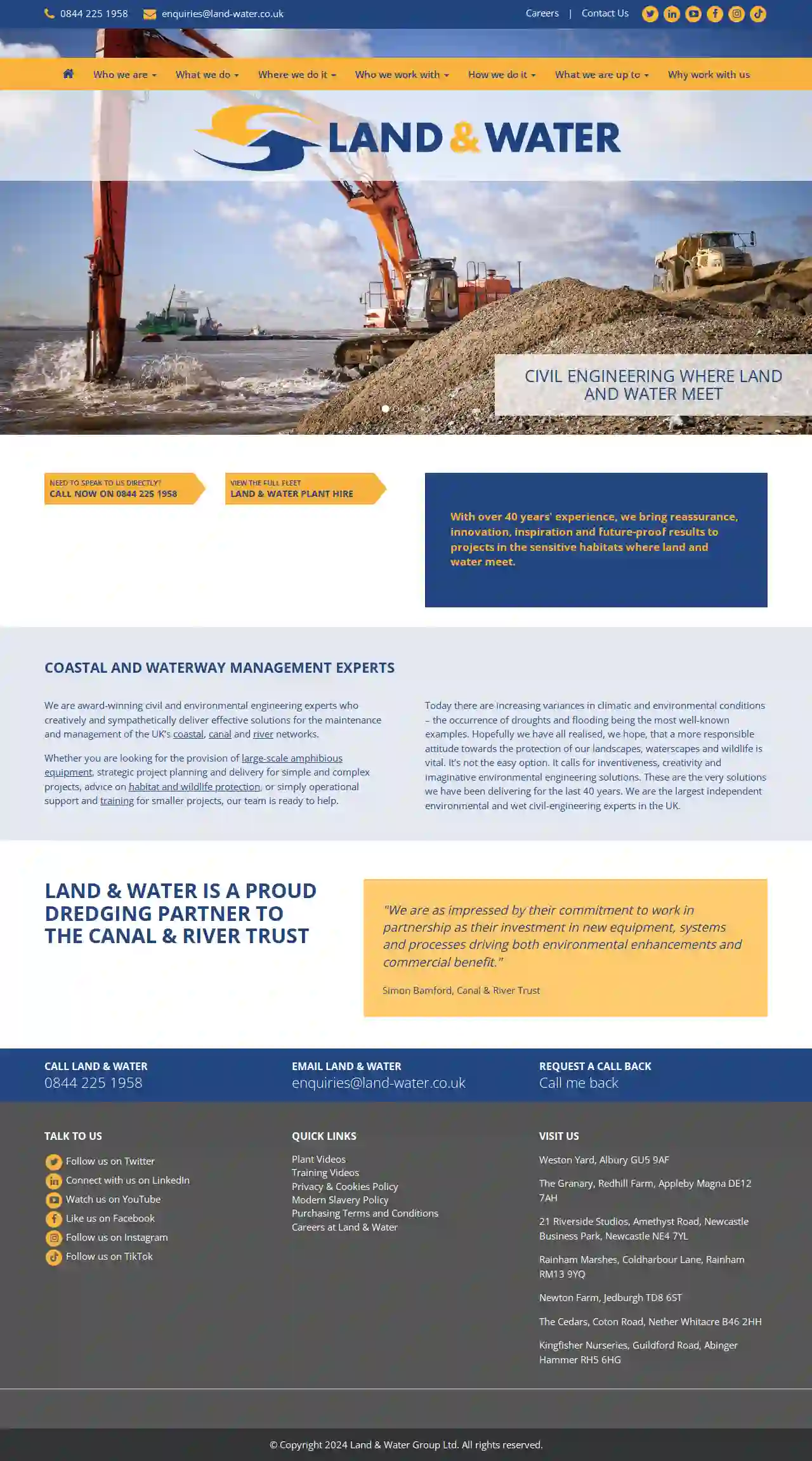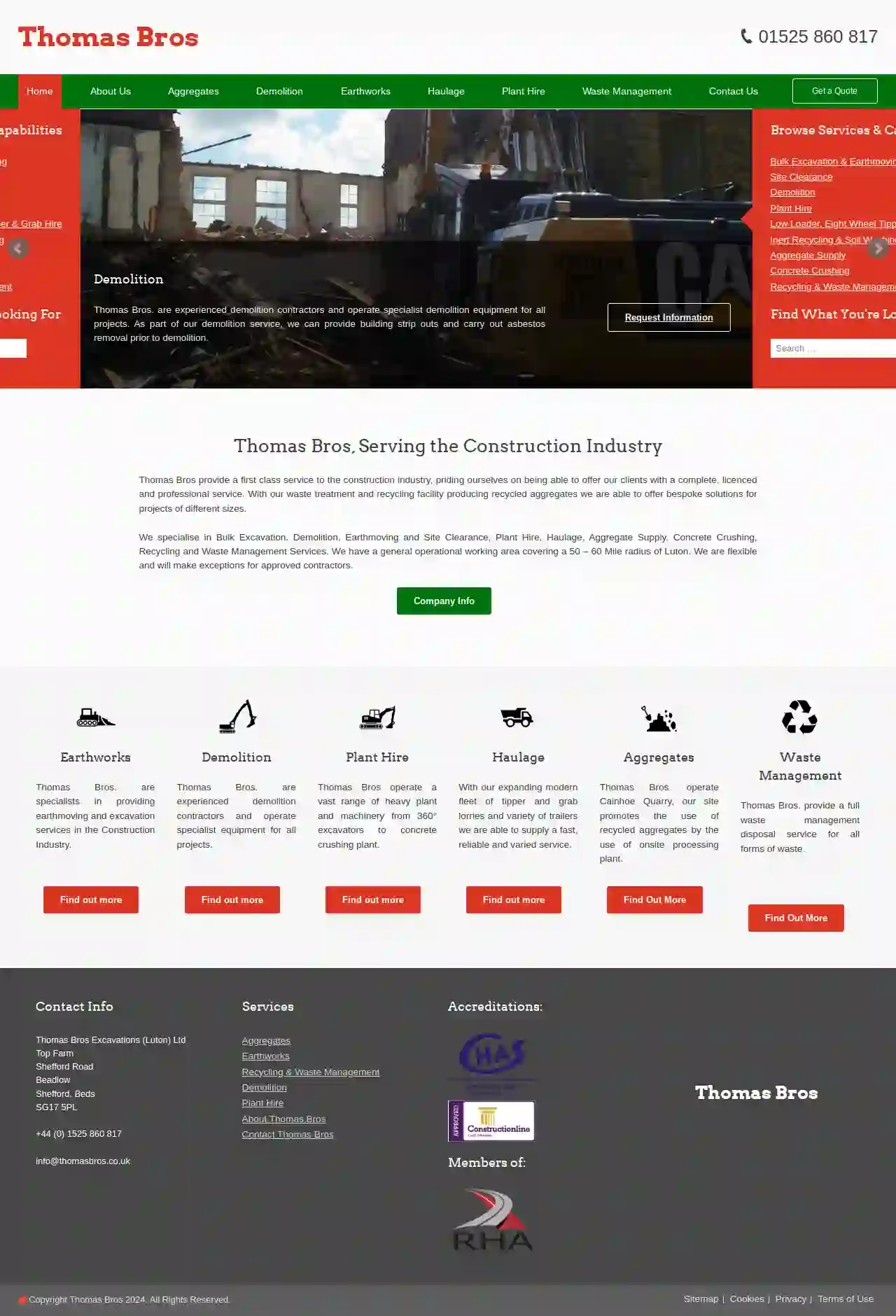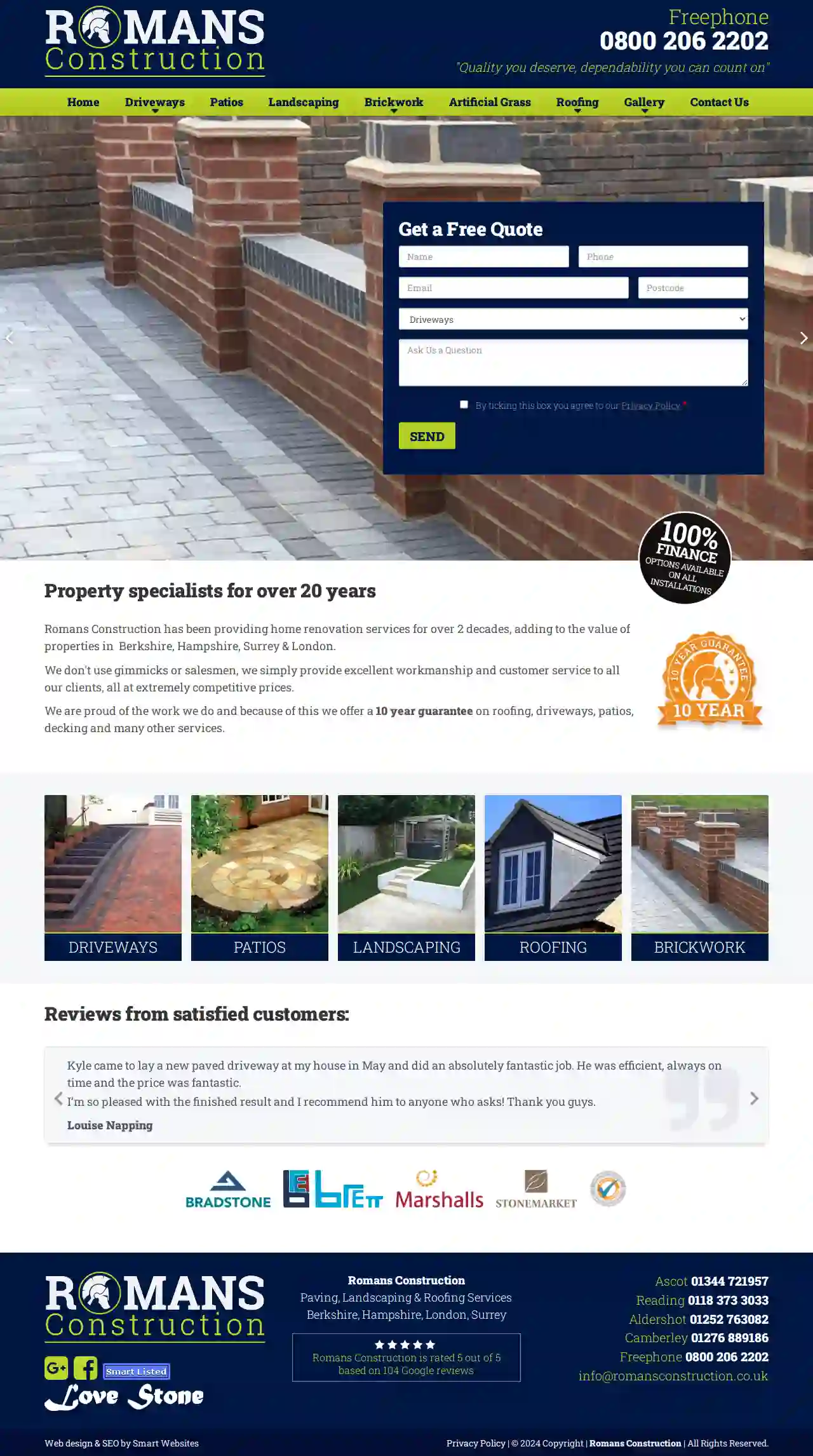Demolition Contractors Sunbury
Best Demo Contractor in Sunbury
Get up to 3 Demo Companies quotes for your project today! Compare profiles, reviews, accreditations, portfolio, etc... and choose the best offer.

JD Groundwork (South East ) LTD
54 reviewsLittle Batson, Ashford Road, Bethersden, TN26 3AX, GBAbout JD Groundwork JD Groundwork is a highly experienced team of construction specialists in groundworks and civil engineering. We provide a wide range of services in the domestic and commercial sectors. We undertake work in Kent, Sussex, Surrey and the South East. Our Ethos Our ethos is to provide industry-leading skills, staff and technology as an expert partner to our clients in order to produce finished works that exceed expectations. Our Services We offer a wide range of groundwork services from smaller domestic projects to commercial work – all carried out to the highest standards at competitive prices. Our Team Our staff members produce consistent results and offer reliable work ethics on every project ensuring that works are delivered inline with regulation and industry best practice standards. Our Reputation The majority of our business comes from word-of-mouth recommendations, so we take great pride in our long-standing reputation as driveway and groundwork contractors that offer quality and reliability at a competitive price.
- Services
- Why Us?
- Testimonials
- Gallery
Get Quote
Synergy Hire
3.76 reviewsKingsbury Rd, Minworth, Sutton Coldfield, B76 9DD, GBThe Synergy Hire Experience At Synergy, we are committed to becoming the business partner of choice for our customers. We want to share over 100 years of combined experience that our specialist management team have gained at the very pinnacle of the equipment hire industry. We Promise We will provide the youngest, most advanced excavators in the industry from our brand new fleet of Hitachi machines. We will deliver what you need, where and when you need it, even the next day. We will help you get the most from your hire, with training on maximising fuel efficiency, optimising operation and even sharing data from real time utilization reports. We want to exceed your expectations Discover More Located just twenty minutes from the M25, our HQ is strategically located to provide next day delivery, wherever you need it - nationwide.
- Services
- Why Us?
- Gallery
Get Quote
Land & Water Services Ltd
3.911 reviewsWeston Yard, Albury, GU5 9AF, GBAward-winning civil and environmental engineering experts With over 40 years' experience, we bring reassurance, innovation, inspiration and future-proof results to projects in the sensitive habitats where land and water meet. We are award-winning civil and environmental engineering experts who creatively and sympathetically deliver effective solutions for the maintenance and management of the UK’s coastal, canal and river networks. Whether you are looking for the provision of large-scale amphibious equipment, strategic project planning and delivery for simple and complex projects, advice on habitat and wildlife protection, or simply operational support and training for smaller projects, our team is ready to help. Today there are increasing variances in climatic and environmental conditions – the occurrence of droughts and flooding being the most well-known examples. Hopefully we have all realised, we hope, that a more responsible attitude towards the protection of our landscapes, waterscapes and wildlife is vital. It’s not the easy option. It calls for inventiveness, creativity and imaginative environmental engineering solutions. These are the very solutions we have been delivering for the last 40 years. We are the largest independent environmental and wet civil-engineering experts in the UK. Land & Water is a proud dredging partner to the Canal & River Trust "We are as impressed by their commitment to work in partnership as their investment in new equipment, systems and processes driving both environmental enhancements and commercial benefit." Simon Bamford, Canal & River Trust
- Services
- Why Us?
- Testimonials
- Gallery
Get Quote
NH Earthworks
4.69 reviewsBarrington, NH, GBNH Earthworks – The Local Experts in Demolition and Excavation If you’re looking for a reliable, experienced, and customer-focused Demolition and Excavation contractor, look no further than NH Earthworks. We are a family-owned and operated business with over 20 years of experience in the industry. NH Earthworks is a premier excavation and earthwork service provider that proudly serves Barrington, NH, and beyond. We are dedicated to delivering high-quality, environmentally sustainable solutions for all your earthwork needs. Our team of skilled professionals uses advanced techniques and equipment to ensure the best outcomes for your projects. Whether you’re in Barrington or neighboring areas, we’re committed to providing exceptional customer service, maintaining safety standards, and completing projects efficiently. Choose NH Earthworks – your trusted local expert for excavation, site preparation, and more in Barrington, NH, and surrounding communities. Choosing NH Earthworks for your excavation and demolition needs is a decision backed by positive customer feedback and a strong reputation in the Barrington, NH area. Known for our professional services, timely completion of projects, and excellent customer relations, NH Earthworks consistently delivers quality work. NH Earthworks is here for all your Demolition & Excavation needs! Servicing all of NH and southern ME, call us today!
- Services
- Why Us?
- Gallery
Get Quote
Guildford Landscapes Ltd
4.935 reviews7 Burnt hill, Plaistow Road, Godalming, GU8 4PG, GBGuildford Landscapes Ltd We are a family-run business with over 20 years of experience in the landscaping and paving industry. We are committed to providing our clients with the highest quality workmanship and customer service. We offer a wide range of services to meet your needs, from simple garden maintenance to complete landscaping projects. We are also proud to be approved members of the following associations: Our Services We offer a wide range of services to meet your needs, from simple garden maintenance to complete landscaping projects. We are also proud to be approved members of the following associations: Paving Driveways Patios Fencing Decking Groundworks Gravel Drives Tarmac Driveways Paths Block Paving Turfing & Lawns Indian Sandstone
- Services
- Why Us?
- Testimonials
- Gallery
Get Quote
Thomas Bros
4.210 reviewsTop Farm, Shefford Road, Top Farm Shefford Road Beadlow Shefford, Beds, Shefford, SG17 5PL, GBAbout Thomas Bros Thomas Bros. specialises in Bulk Excavation, Demolition services, Earthmoving and Site Clearance Services, Plant Hire, Haulage, Aggregate Supply, Concrete Crushing, Recycling and Waste Management Services. We have a general operational working area covering a 50 – 60-mile radius of Luton, however we are flexible and will make exceptions for approved contractors. Our History Thomas Bros. originated as an Earthmoving and Demolition Contractor offering bulk excavation, demolition and earthmoving services to the Construction Industry. Thomas Bros. expanded in 2005 when it felt necessary to open a waste treatment and recycling facility. Our Commitment Our facility is a ‘high – tech’ operation which, through state of the art technology, reduces the amount of material to landfill, allowing us to promote sustainable quality recycled aggregates. Recycled aggregates reduce the need for primary aggregates and minimise the environmental impact, offering both commercial and environmental benefits to Clients. Our Values We pride ourselves in providing the fastest and most competitively priced services in a safe and professional manner which has built many long term and repeat business relationships with Clients.
- Services
- Why Us?
- Gallery
Get Quote
Ashford Homes (South Western) Limited
3.47 reviewsDoric House, Middleton Drive, Doric House Middleton Drive Bradford on Avon Wiltshire, Bradford on Avon, BA15 1GB, GBWelcome to Ashford Homes A multi-award winning independent property developer Since 1990 we’ve established a strong track record of building luxury, high specification new homes in Wiltshire. No two developments are the same and each home is meticulously designed and rigorously evaluated for both aesthetics and the functionality of day to day use.
- Services
- Why Us?
- Accreditations
- Gallery
Get Quote
JMCD Developments Ltd
4.716 reviewsLower Horley Green Farm, Horley Green Road, Claremount, Halifax, HX3 6AX, GBWelcome to JMCD Developments Ltd JMCD Developments Ltd is one of the leading construction companies in Halifax and West Yorkshire. We specialize in property refurbishment, building restoration, shopfitting, building maintenance, barn conversions, building renovation, driveway and paving services. Domestic Building Services At JMCD Developments, we offer a wide range of domestic construction services, tailored to meet the unique needs of our clients. From extensions to general building, loft conversions and garden rooms we have the experience to exceed your expectations. Commercial Building Services JMCD Developments offer a wide range of commercial services from shopfitting and building maintenance to insurance work. We provide proactive maintenance solutions to address any issues and preserve the structural integrity of your building. Specialist Building Services We have specialist experience in many areas of construction such as barn conversions, building restoration and shopfitting. JMCD Developments team of highly skilled, time-served craftsmen ensures meticulous attention to detail and historical accuracy. Construction with care Enter, the professionals from JMCD Developments Ltd, with multiple years’ experience in creating new structures and remodelling existing ones for commercial and domestic projects. Servicing clients across the West Yorkshire area, our trusted team brings a high-level of professionalism to your project. From the moment we’re onsite, our team takes pride in its service, continuously going above and beyond what is expected in a building contractor to ensure you, the client remain happy while your build comes to life. Full range of building services We offer a full range of building and landscaping services to the public throughout the Halifax and West Yorkshire area. Most of our clients are homeowners and we are proud to receive much of our work through personal recommendation. From small renovations to larger, complex construction projects, you can rely on your expert team of building contractors at JMCD Developments to stick to the plan. Over 30 Years Experience JMCD Developments are one of the leading construction companies in the Halifax and West Yorkshire area. With over 30 years experience. Get in touch for a free quote today.
- Services
- Why Us?
- Gallery
Get Quote
Nucore Construction Ltd
135 Gilders Road, Chessington, KT9 2EB, GBSiteLeaders in bespoke projects from conception to completion. Who are Nucore? In short - we are a group of dedicated professionals that thrive off of a passion for building and all things construction. We love what we do and it shows. We have a proven track record in delivering Design, Management and Construction services on programme and in budget. Creating unique buildings and unrivalled finishes with our skilled teams of experienced professionals. We deliver high quality projects across all sectors of construction from residential, commercial, retail, healthcare, and other sectors. Our services provide clients with a thorough, bespoke, turn key package catered to their individual project. As Nucore know, no two projects are ever the same! Why choose Nucore? We have an abundance of knowledge and experience on all aspects of our industry including: Health & Safety (CDM coordination) In depth expertise throughout all phases of the construction process Our design, management and construction teams boast a wealth of knowledge and skill within their sectors working on some of the most prestigious projects across the UK in the last 30 years 360 degree communication throughout the project by a dedicated project manager and design manager We have experience in CLT, SIP's, Green Oak & Timber Framing RC & Steel frame Construction Grade 1&2 Listed buildings Working with the National Trust and English Heritage Vast experience in building regulations, codes and law Working to NHBC codes and standards BIM Documentation control and transparency in our quotations An understanding, friendly, positive, and professional approach to our work & clients About Our Company Nucore specialise in providing a unique service for all our clients for all types of projects. This is accompanied with the best specialists and professionals in the industry to meet our exceptional quality and standards. 2018 Year of Establishment 18 Projects Completed 3 Ongoing Projects Robert Holmes Director/Owner, Nucore Construction Ltd
- Services
- Why Us?
- Our Team
- Gallery
Get Quote
Romans Construction Ltd
5105 reviewsStudley Court Mews, Guildford Road, Chobham, GU24 8EB, GBProperty specialists for over 20 years Romans Construction has been providing home renovation services for over 2 decades, adding to the value of properties in Berkshire, Hampshire, Surrey & London. We don't use gimmicks or salesmen, we simply provide excellent workmanship and customer service to all our clients, all at extremely competitive prices. We are proud of the work we do and because of this we offer a 10 year guarantee on roofing, driveways, patios, decking and many other services.
- Services
- Why Us?
- Testimonials
- Gallery
Get Quote
Over 13,059+ Excavation Companies on our platform
Our excavation providers operate in Sunbury and surroundings!
ExcavationHQ has curated and vetted the Best Excavation Contractors in and around Sunbury. Find a trustworthy pro today.
Frequently Asked Questions About Demolition Contractors
- Project Assessment: The demolition contractor evaluates the structure, site conditions, and project requirements.
- Permitting: Obtain necessary demolition permits from local authorities.
- Site Preparation: Secure the site, disconnect utilities, and remove any valuable or reusable items.
- Hazardous Material Abatement: Professionally remove asbestos, lead paint, or other hazardous materials if present.
- Demolition: Execute the chosen demolition method, bringing down the structure safely and efficiently.
- Debris Removal and Site Cleanup: Sort, process, and dispose of demolition debris responsibly. Clean up the site to prepare it for future use.
- Feasibility Studies: Assessing the viability and challenges of a demolition project.
- Demolition Planning: Developing demolition plans, including method selection, sequencing, and safety procedures.
- Permitting Assistance: Navigating the demolition permitting process and ensuring compliance with regulations.
- Hazardous Material Surveys: Identifying and managing hazardous materials, such as asbestos and lead paint.
- Cost Estimating: Providing accurate cost estimates for demolition services.
- Project Management: Overseeing the demolition process and ensuring it proceeds as planned.
What are the steps involved in a typical demolition process?
What is the difference between demolition and deconstruction?
Demolition: Typically involves bringing down a structure quickly and efficiently, often using heavy machinery and potentially explosives. The primary goal is to clear the site.
Deconstruction: Focuses on carefully dismantling a building piece by piece to salvage reusable materials. It prioritizes minimizing waste and environmental impact, often involving manual labor and specialized tools.
The choice between demolition and deconstruction depends on the project's objectives, budget, and environmental considerations.
What is the role of a demolition consultant?
How do I find demolition contractors near me?
What are the steps involved in a typical demolition process?
- Project Assessment: The demolition contractor evaluates the structure, site conditions, and project requirements.
- Permitting: Obtain necessary demolition permits from local authorities.
- Site Preparation: Secure the site, disconnect utilities, and remove any valuable or reusable items.
- Hazardous Material Abatement: Professionally remove asbestos, lead paint, or other hazardous materials if present.
- Demolition: Execute the chosen demolition method, bringing down the structure safely and efficiently.
- Debris Removal and Site Cleanup: Sort, process, and dispose of demolition debris responsibly. Clean up the site to prepare it for future use.
What is the difference between demolition and deconstruction?
Demolition: Typically involves bringing down a structure quickly and efficiently, often using heavy machinery and potentially explosives. The primary goal is to clear the site.
Deconstruction: Focuses on carefully dismantling a building piece by piece to salvage reusable materials. It prioritizes minimizing waste and environmental impact, often involving manual labor and specialized tools.
The choice between demolition and deconstruction depends on the project's objectives, budget, and environmental considerations.
What is the role of a demolition consultant?
- Feasibility Studies: Assessing the viability and challenges of a demolition project.
- Demolition Planning: Developing demolition plans, including method selection, sequencing, and safety procedures.
- Permitting Assistance: Navigating the demolition permitting process and ensuring compliance with regulations.
- Hazardous Material Surveys: Identifying and managing hazardous materials, such as asbestos and lead paint.
- Cost Estimating: Providing accurate cost estimates for demolition services.
- Project Management: Overseeing the demolition process and ensuring it proceeds as planned.